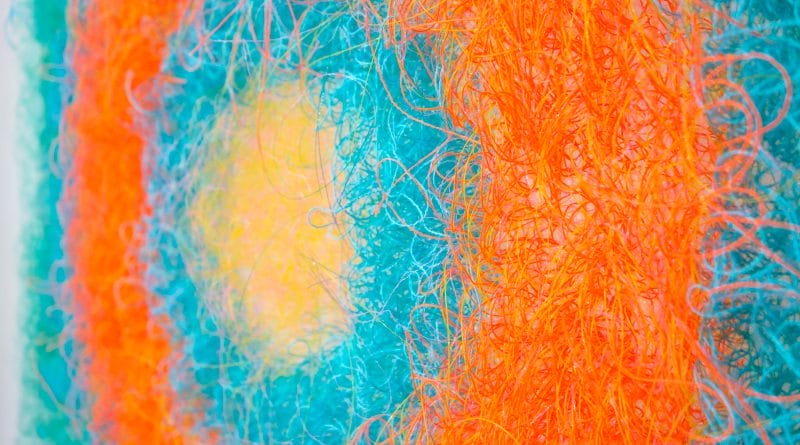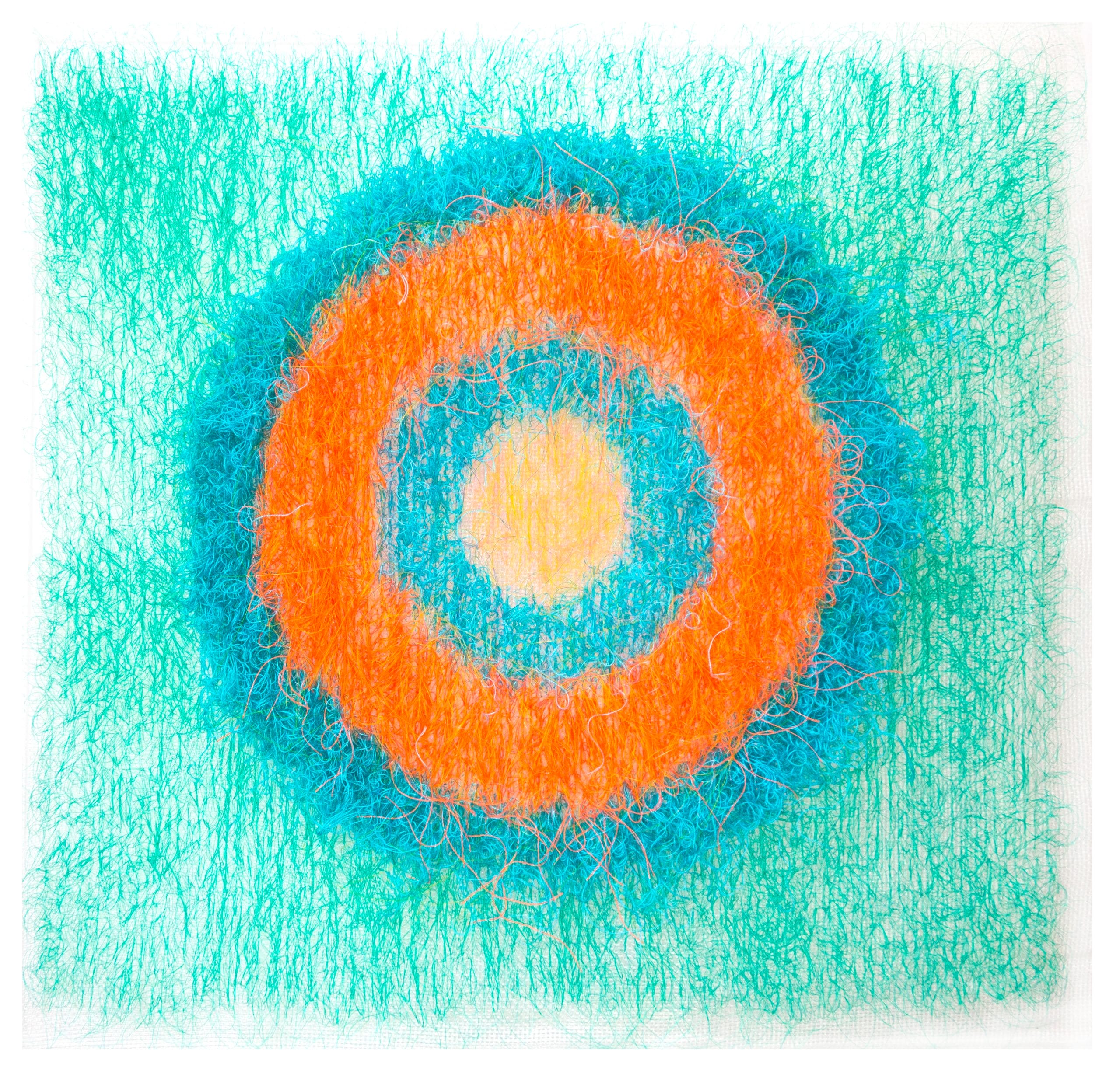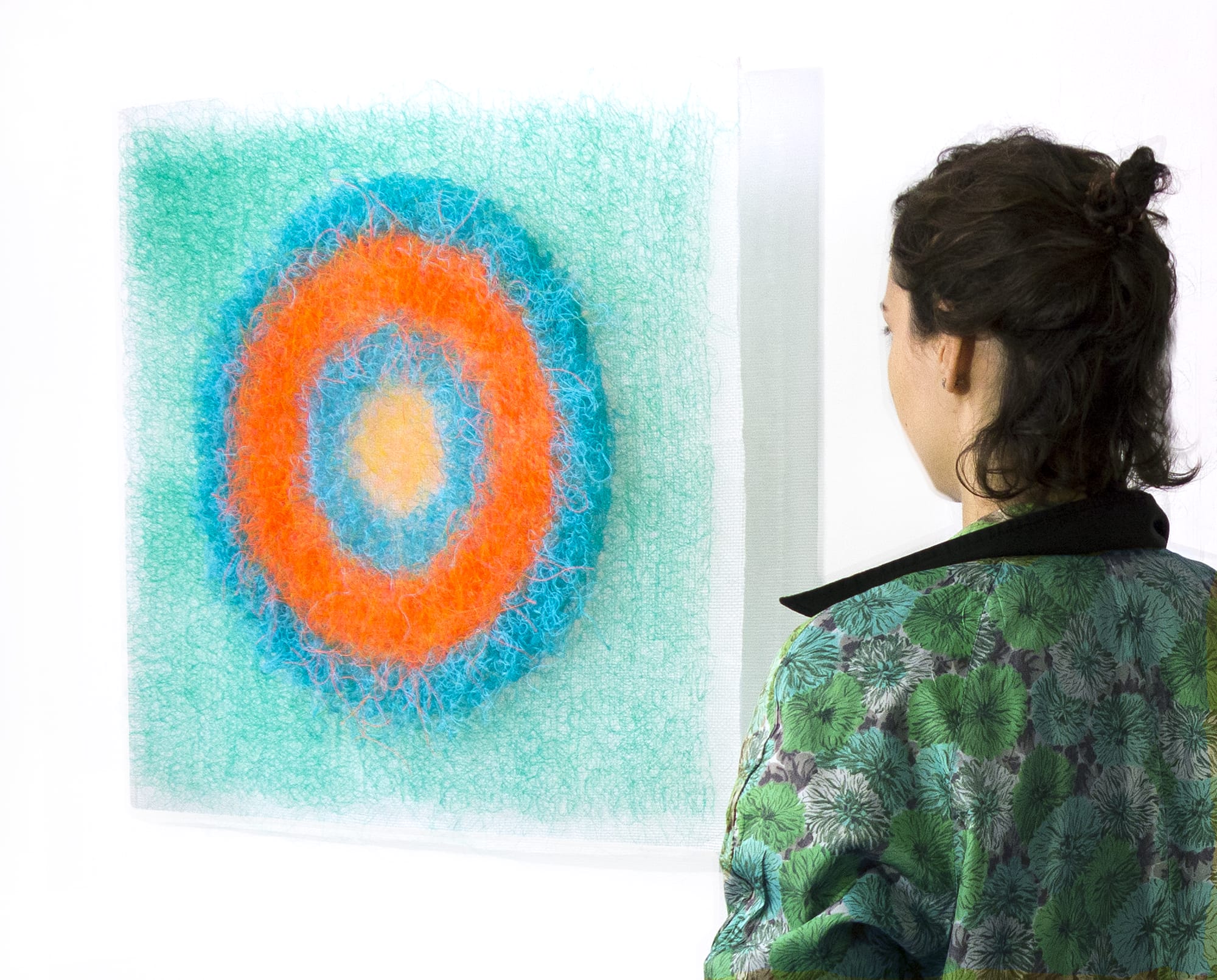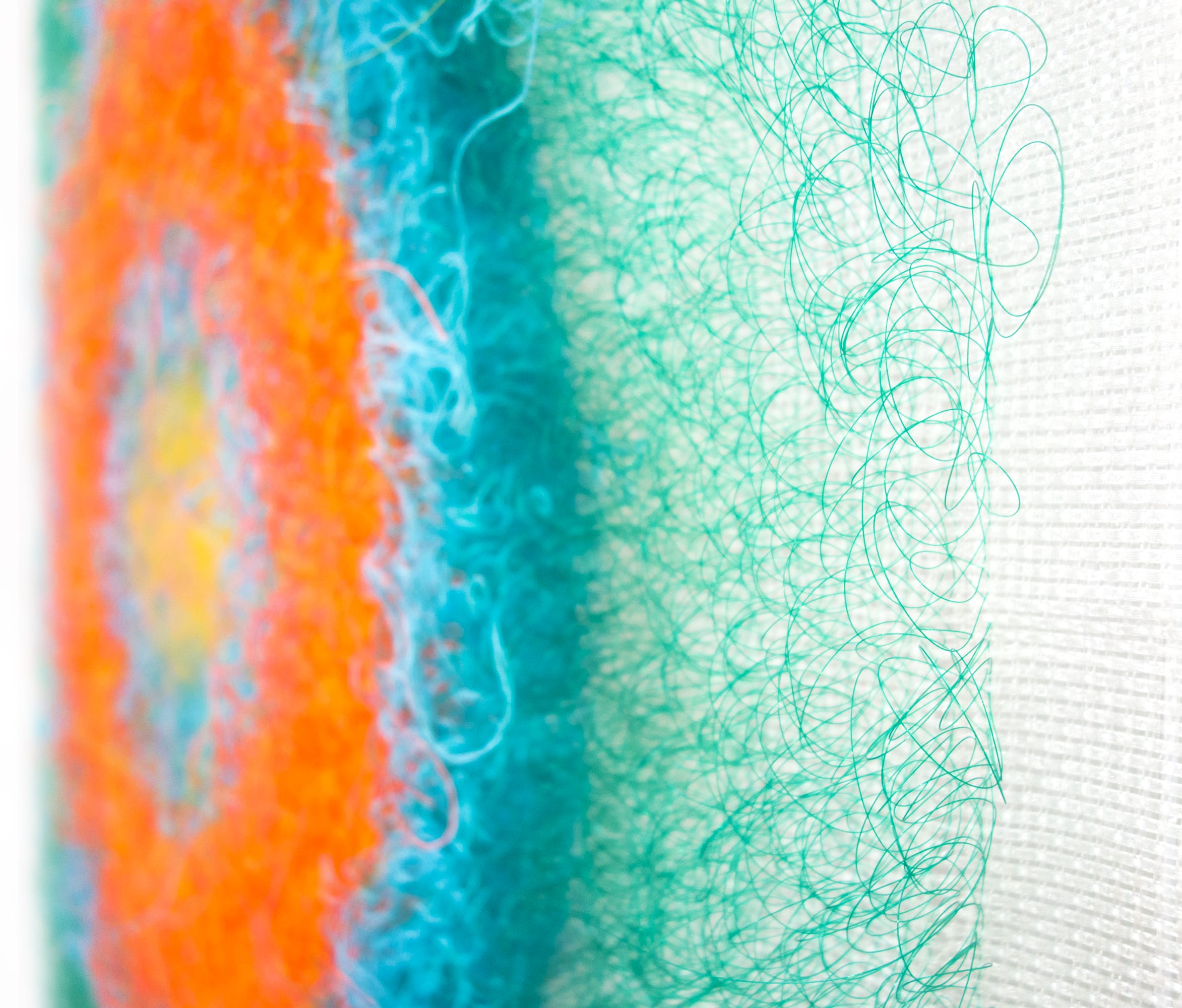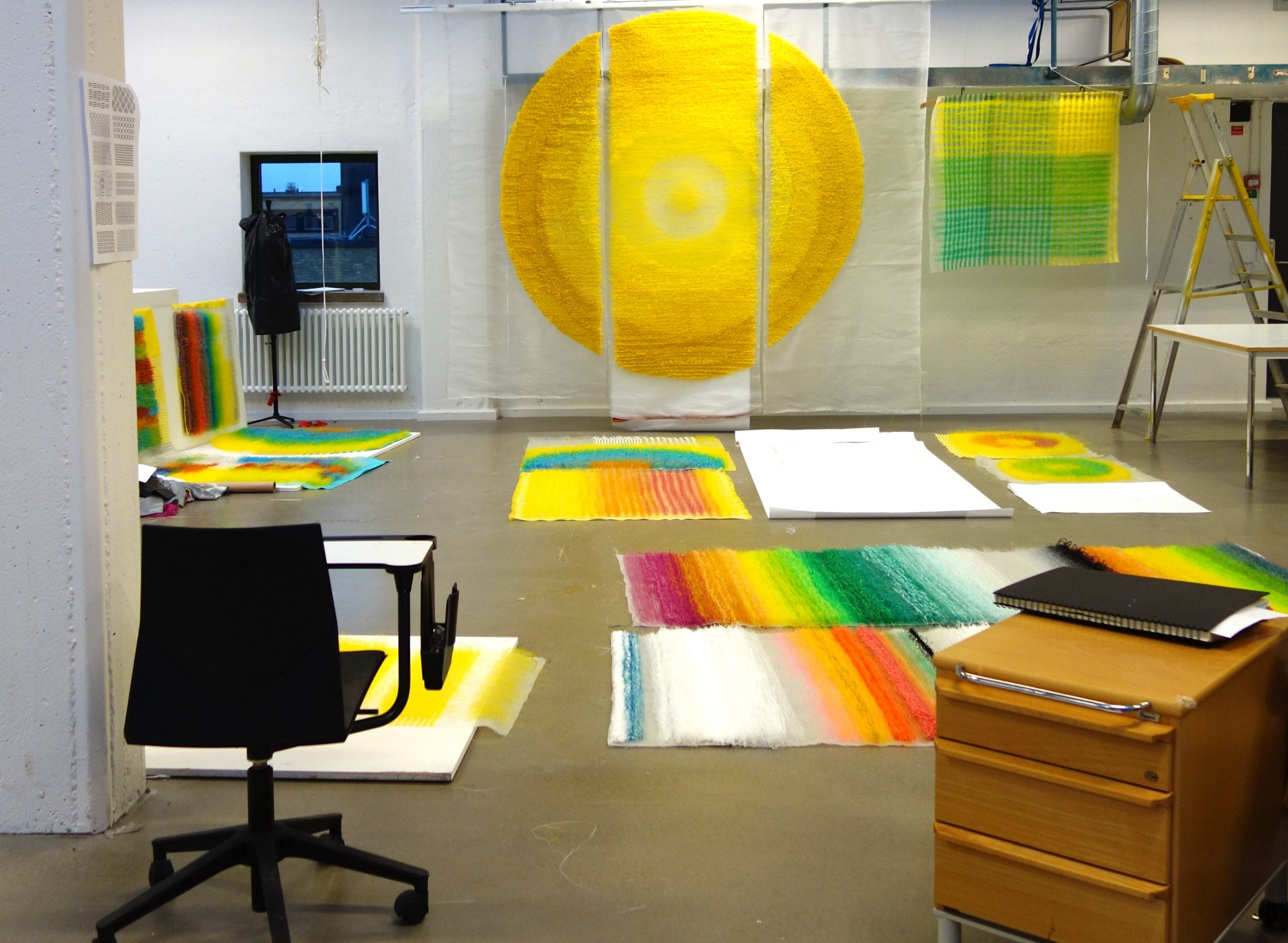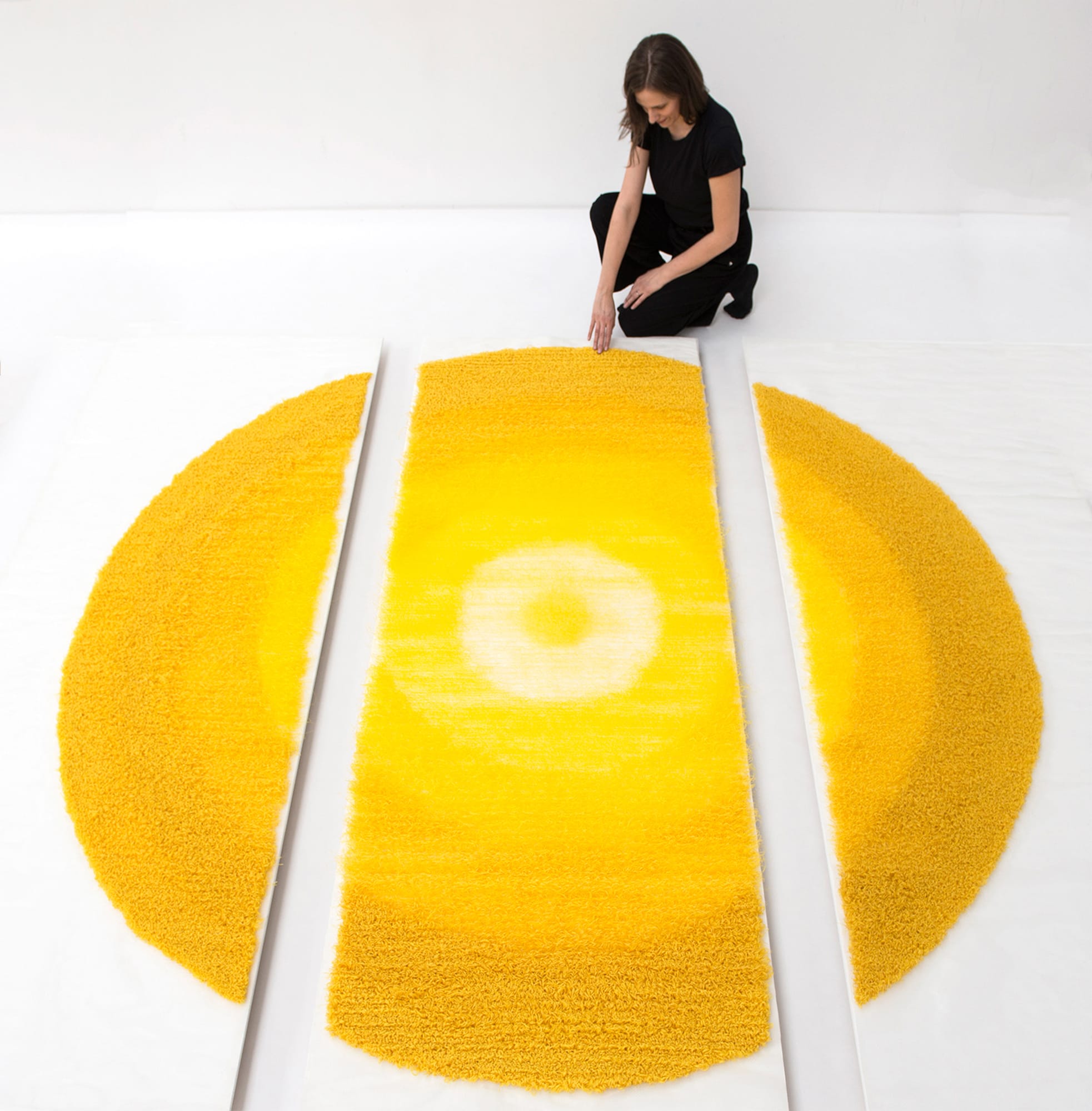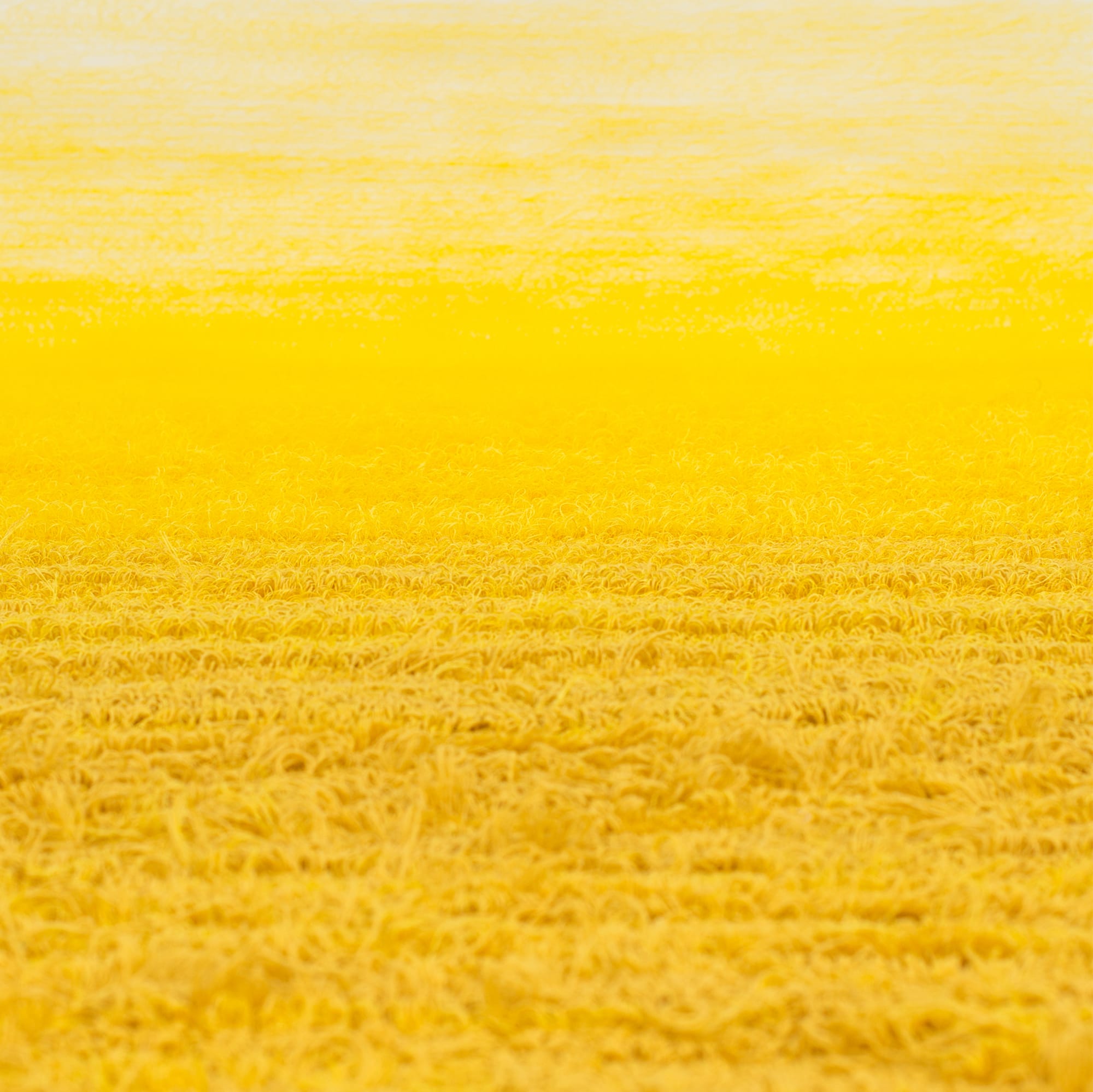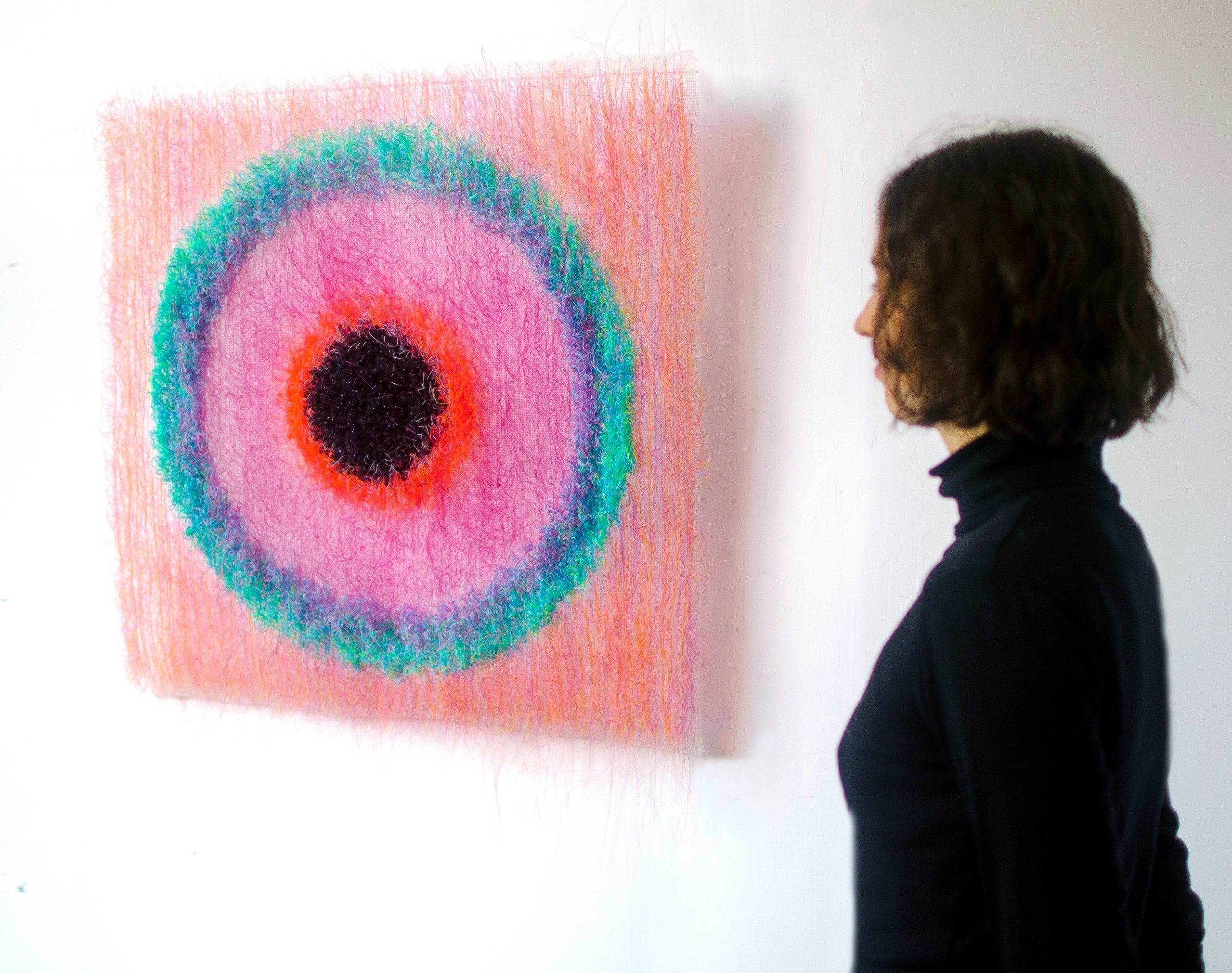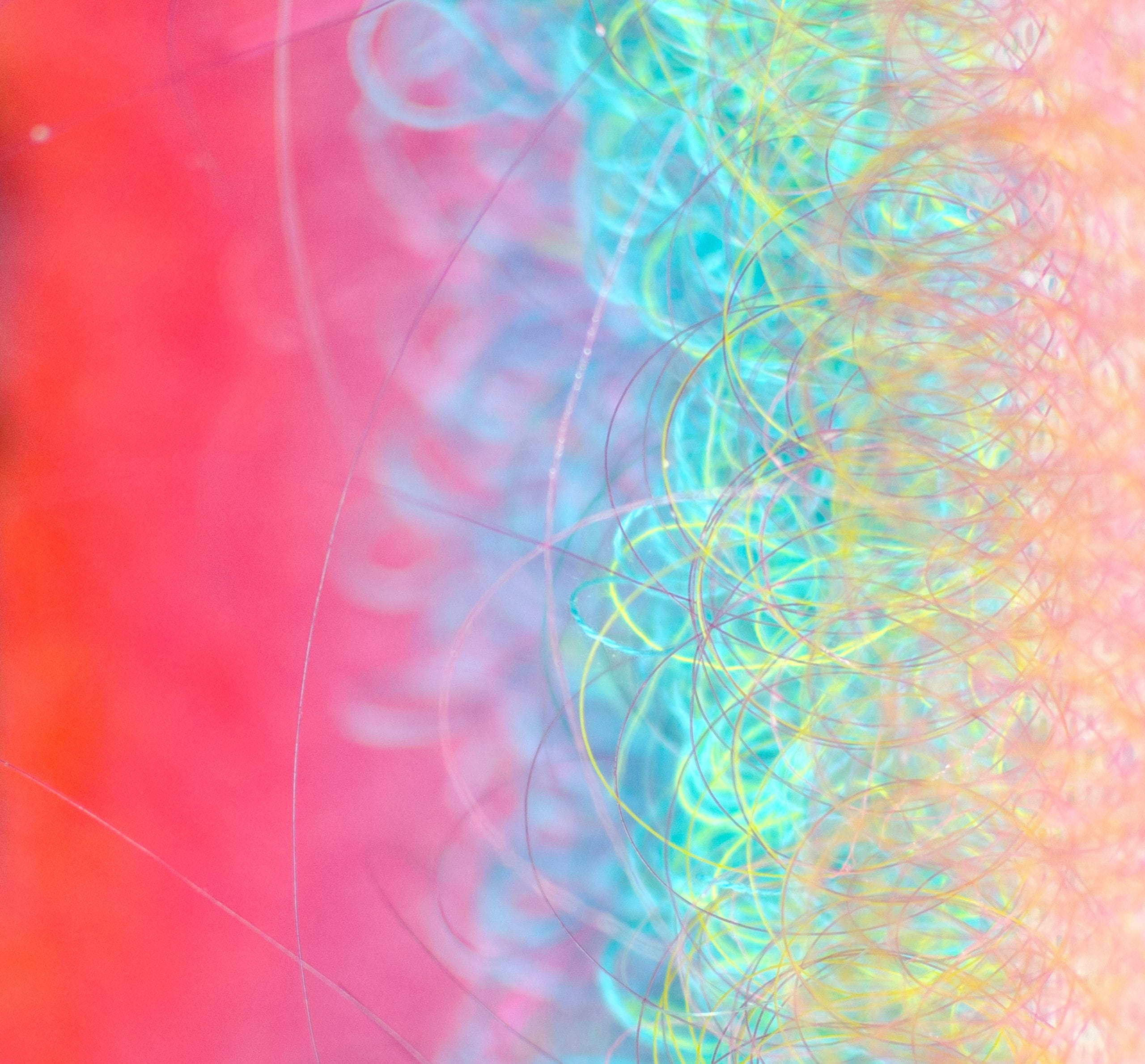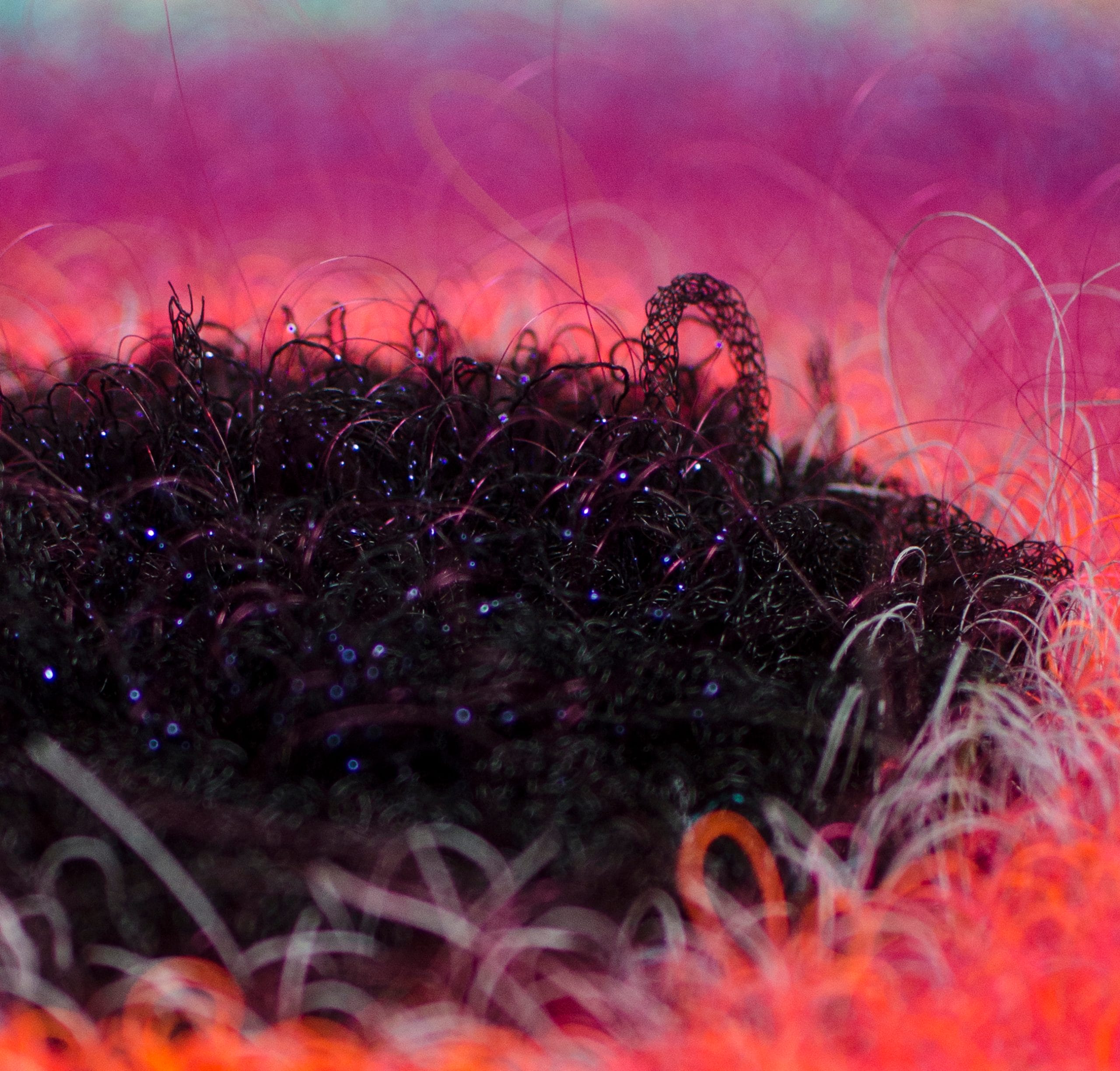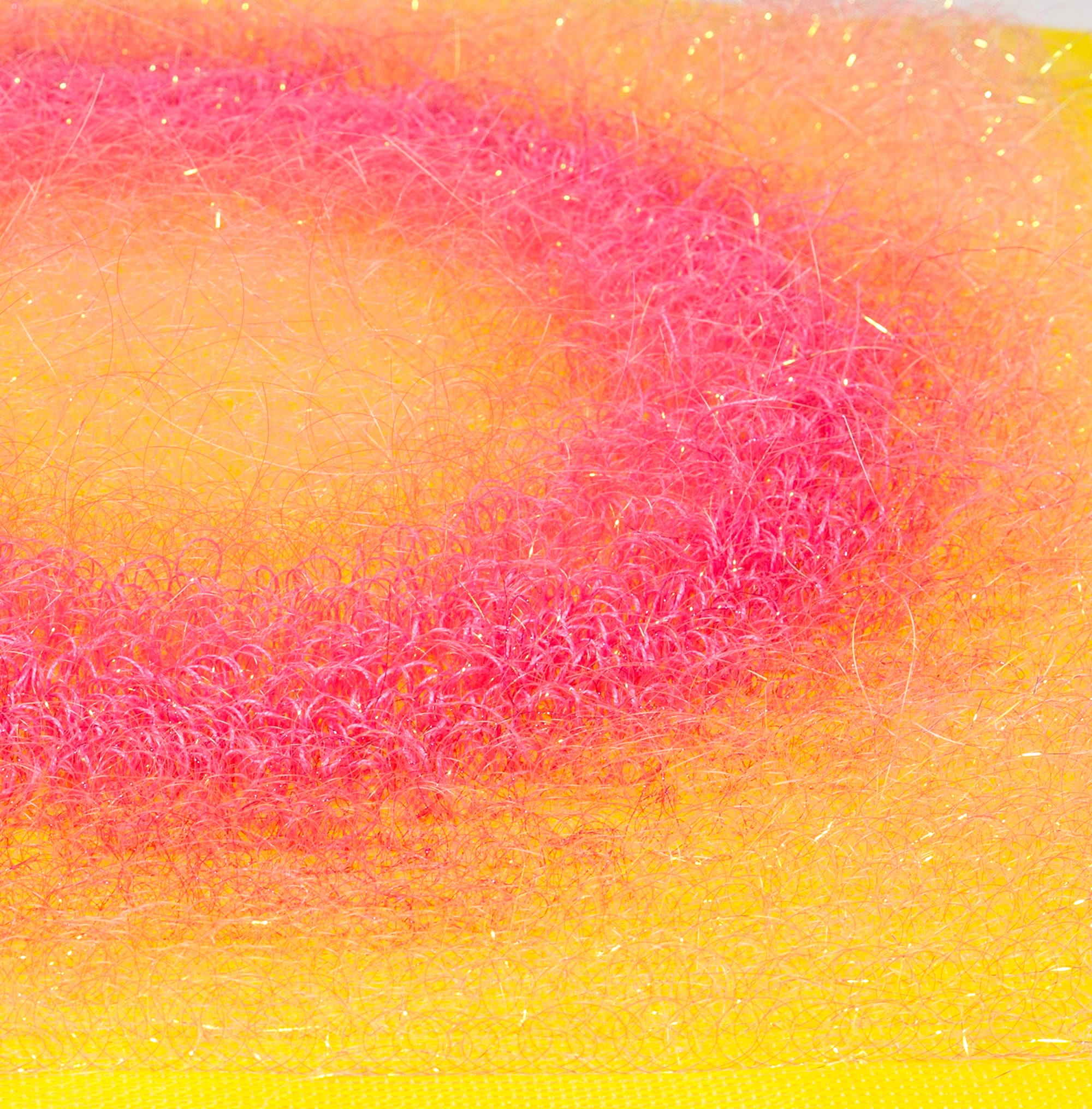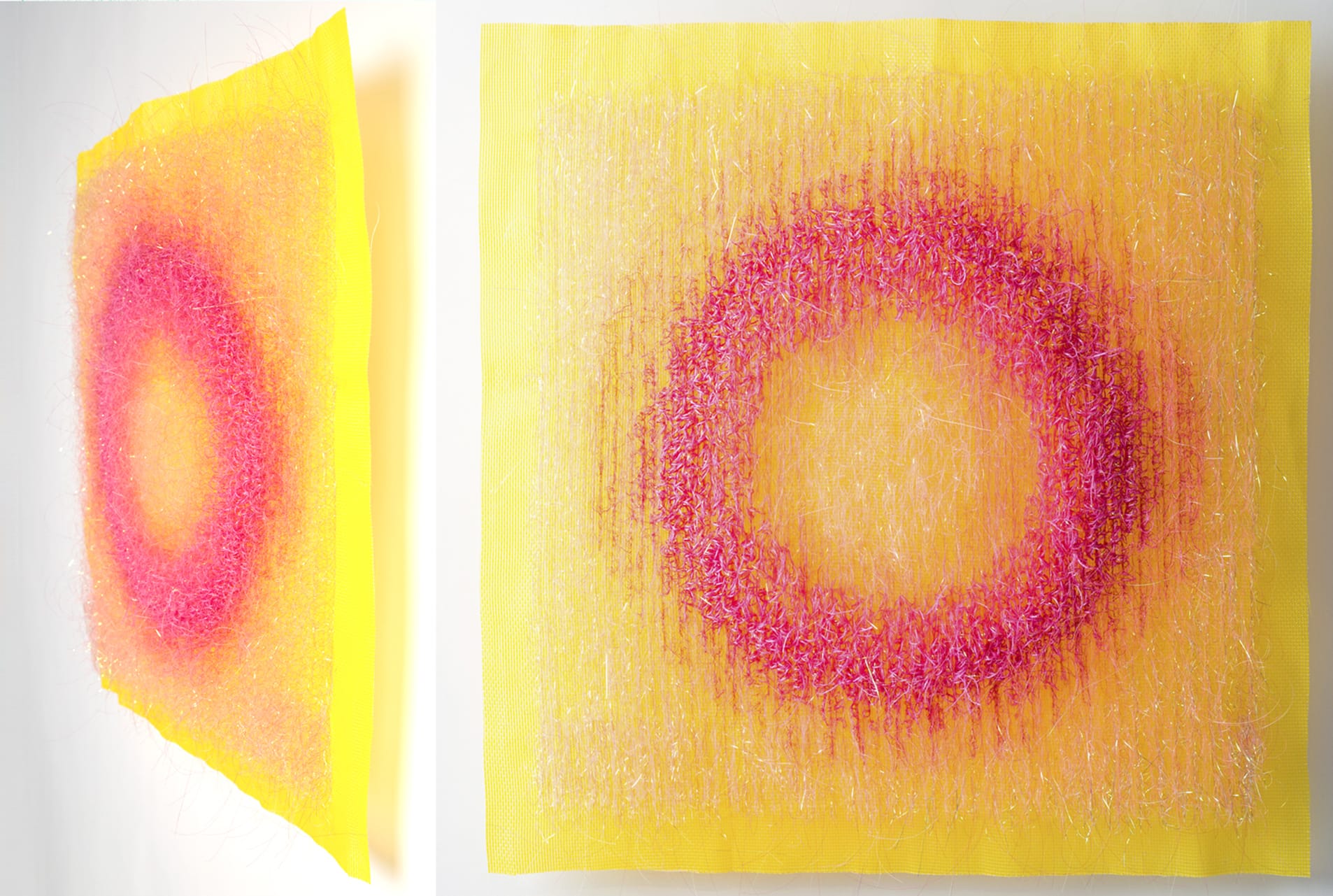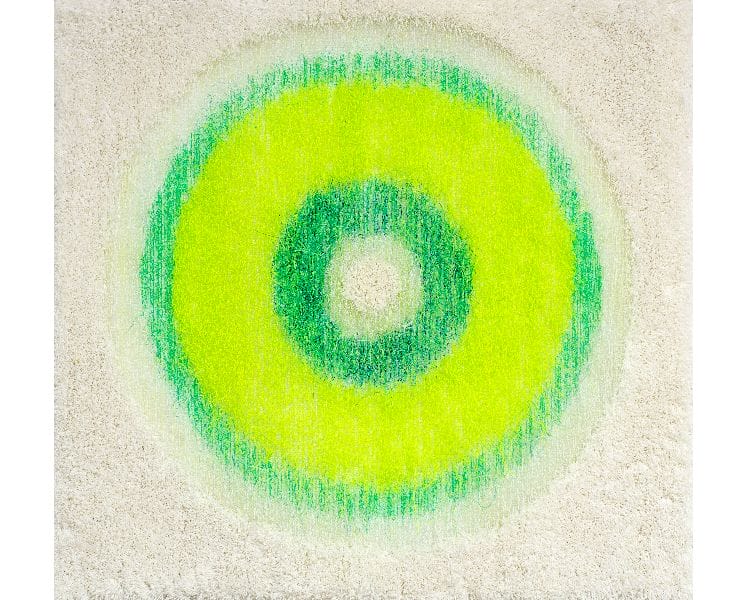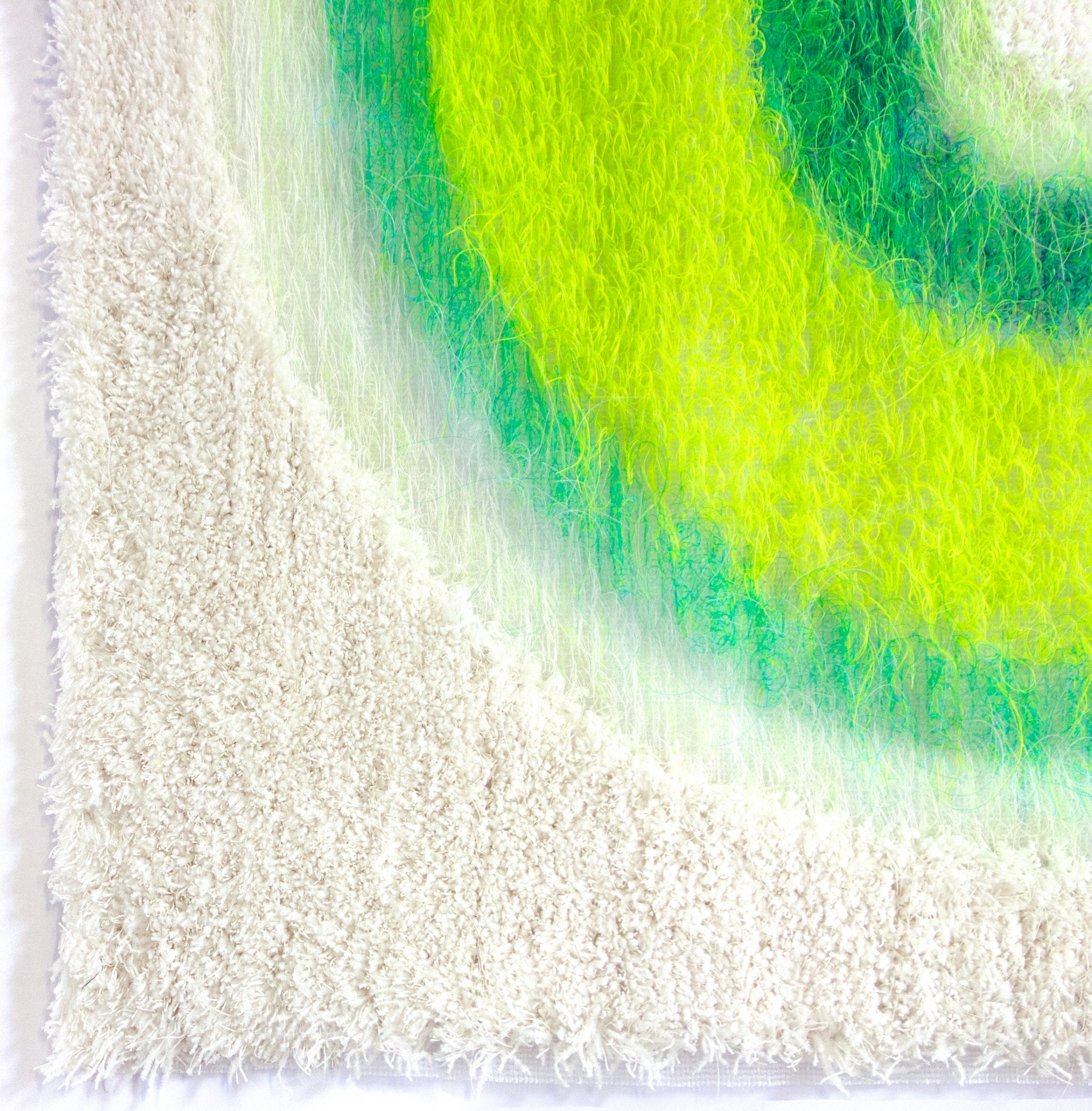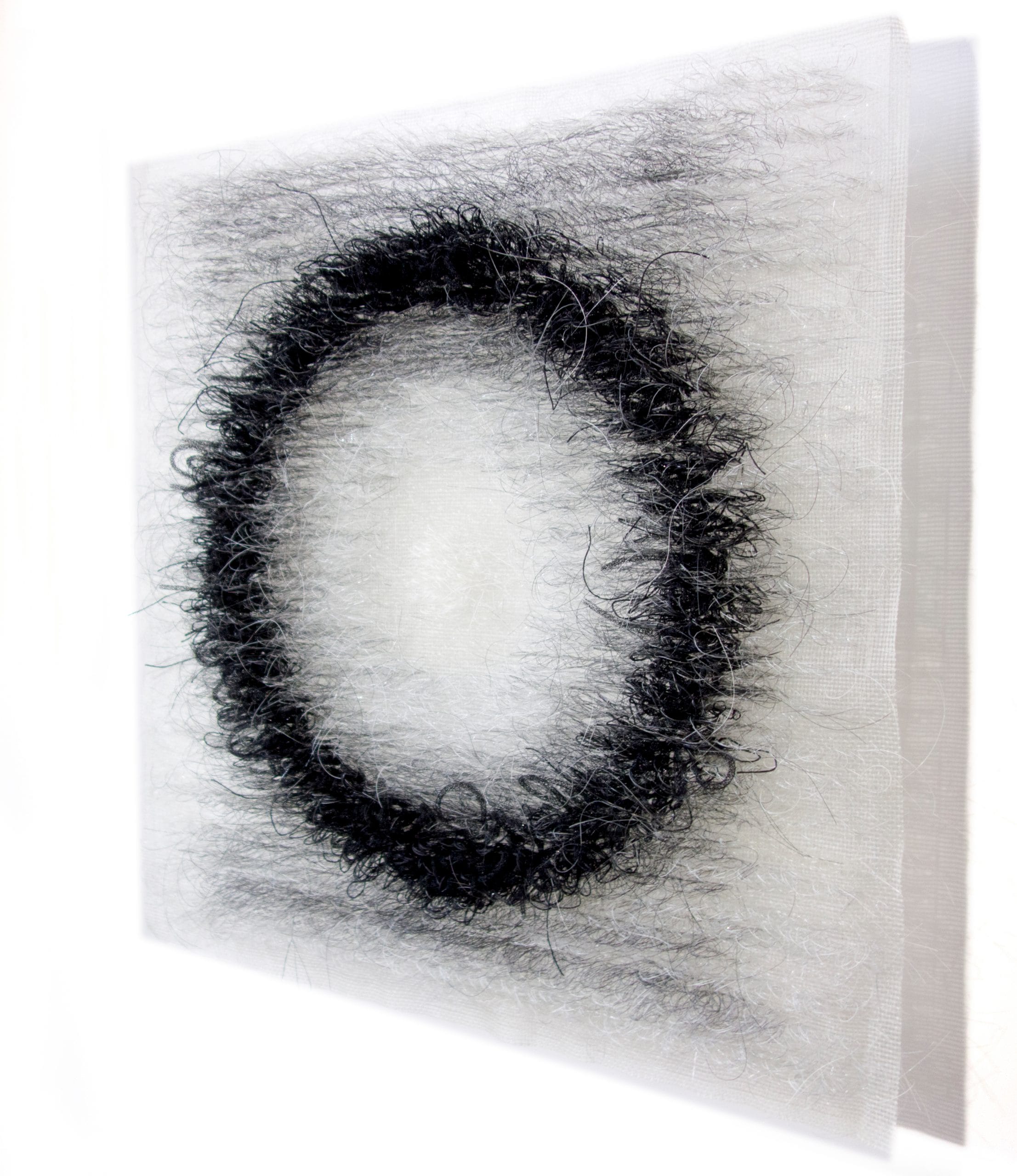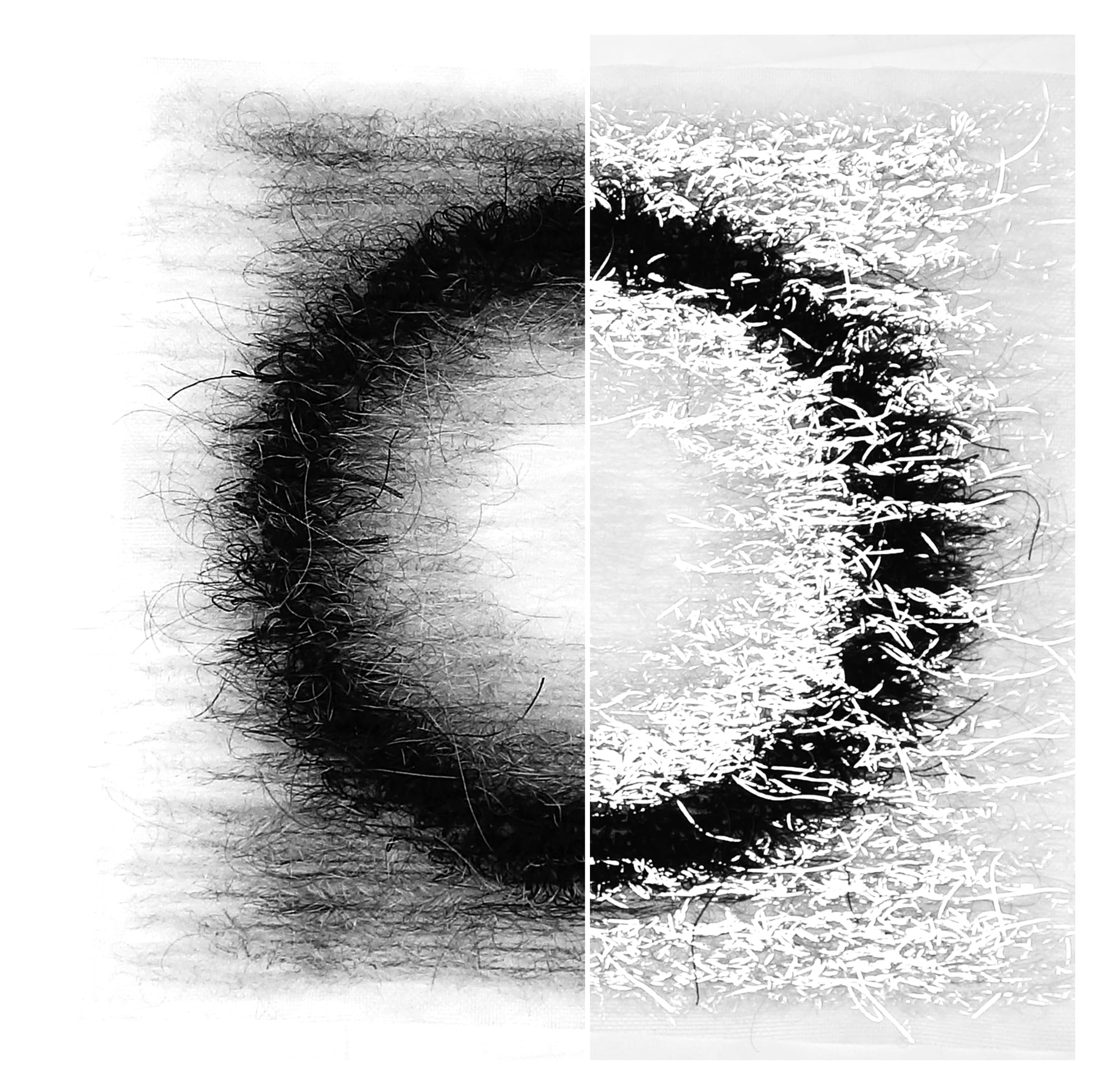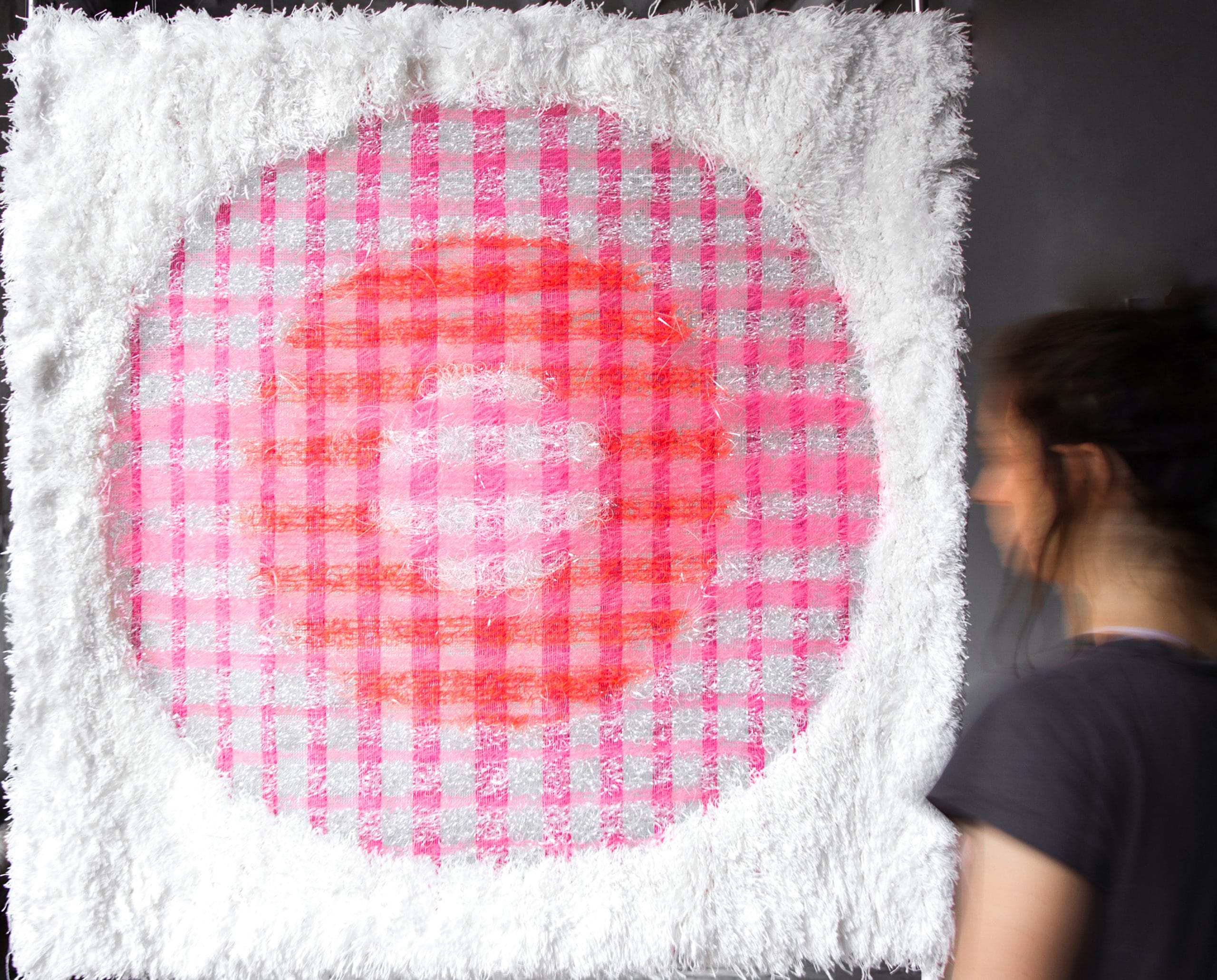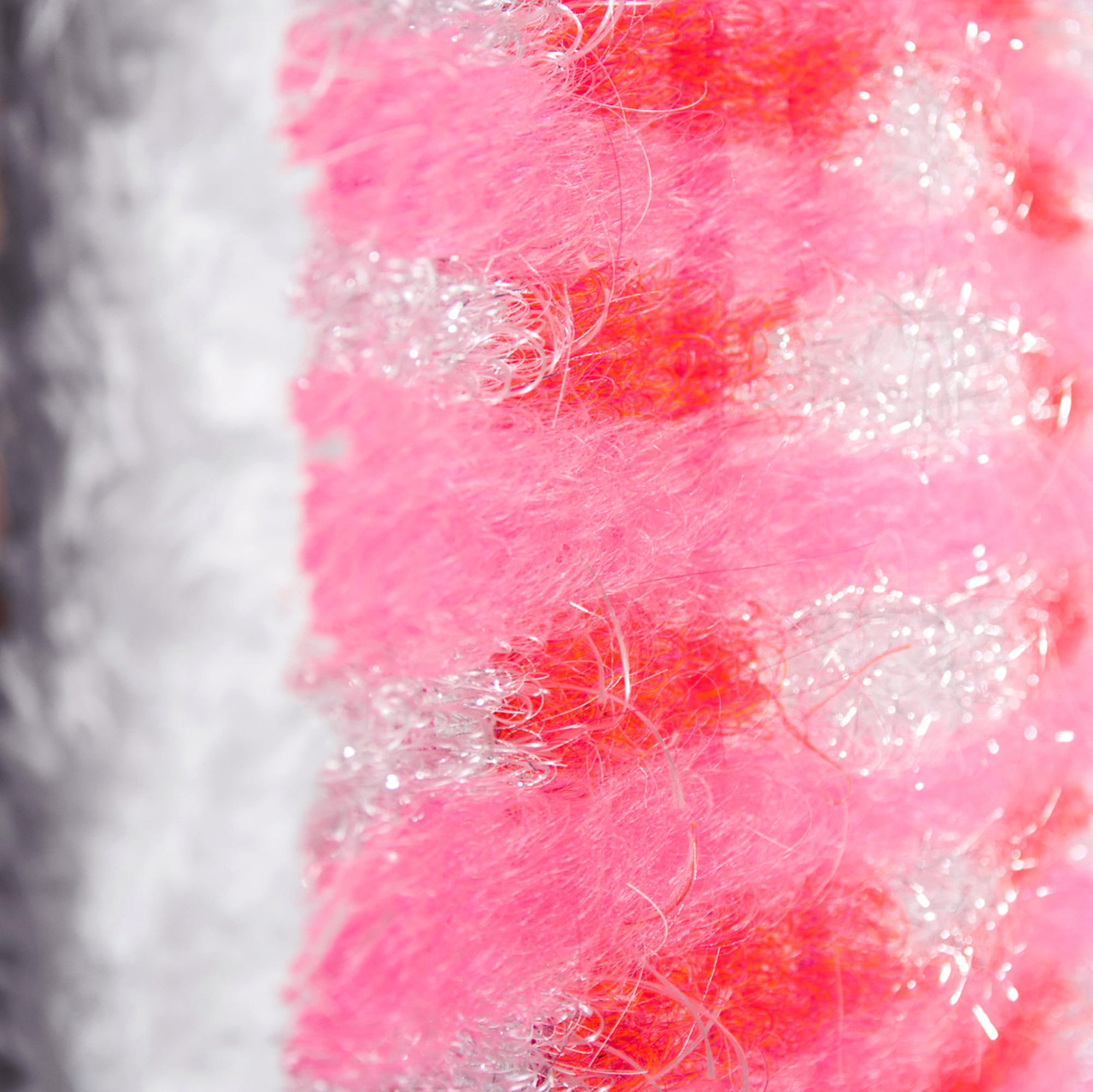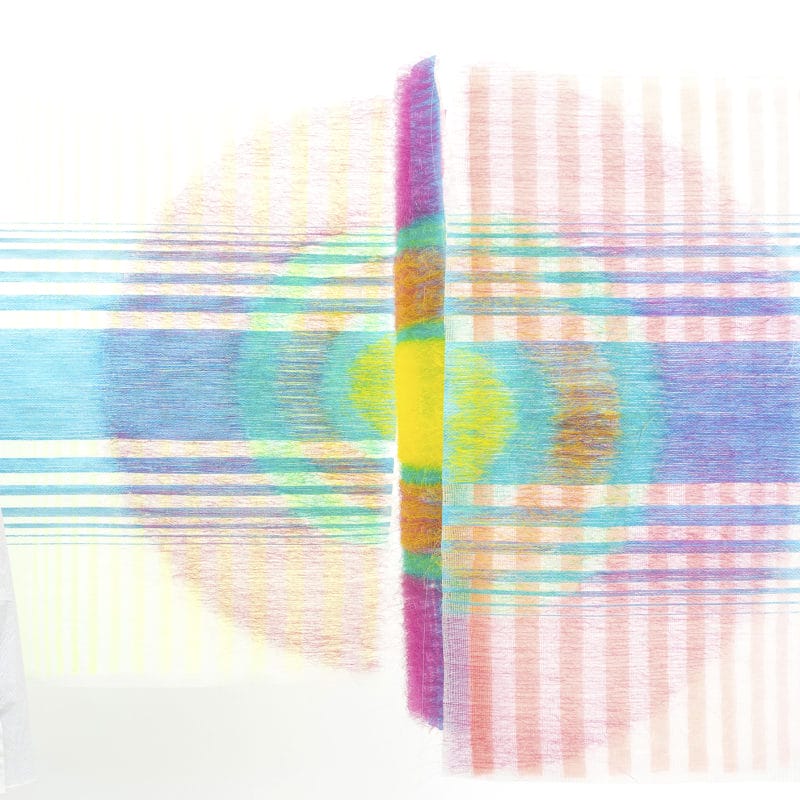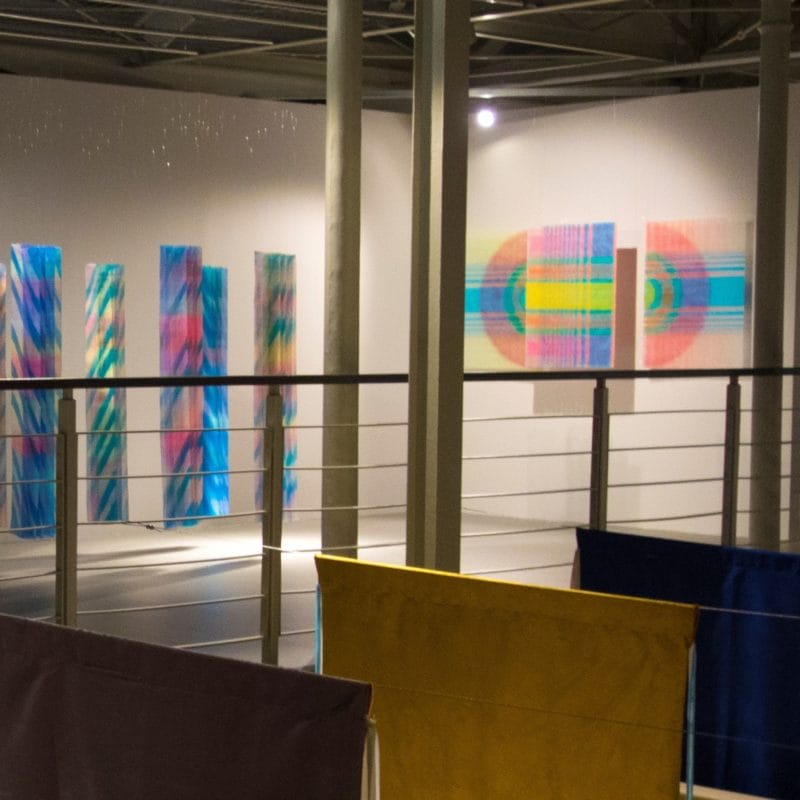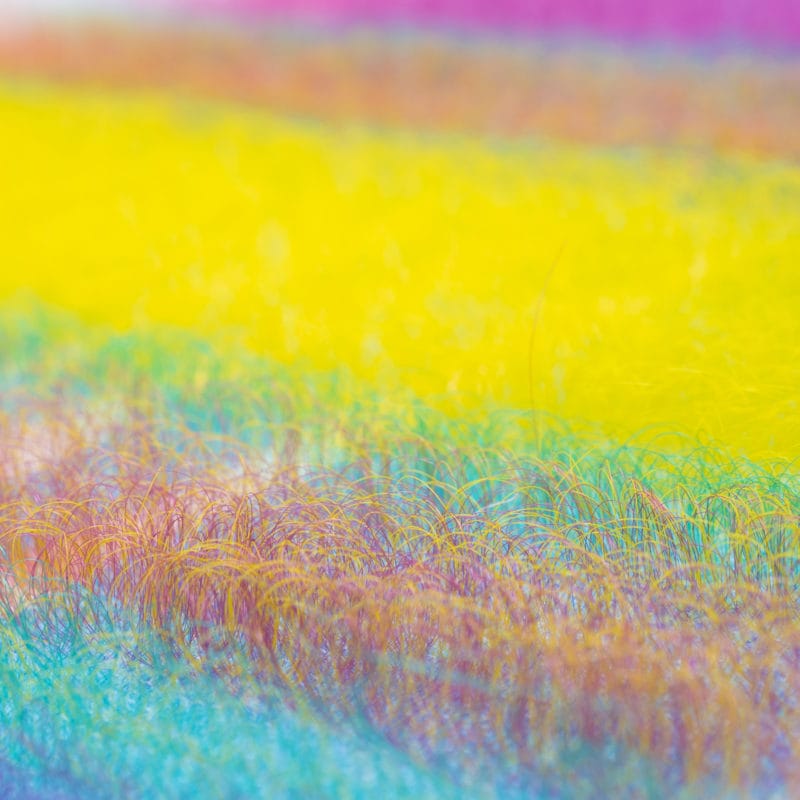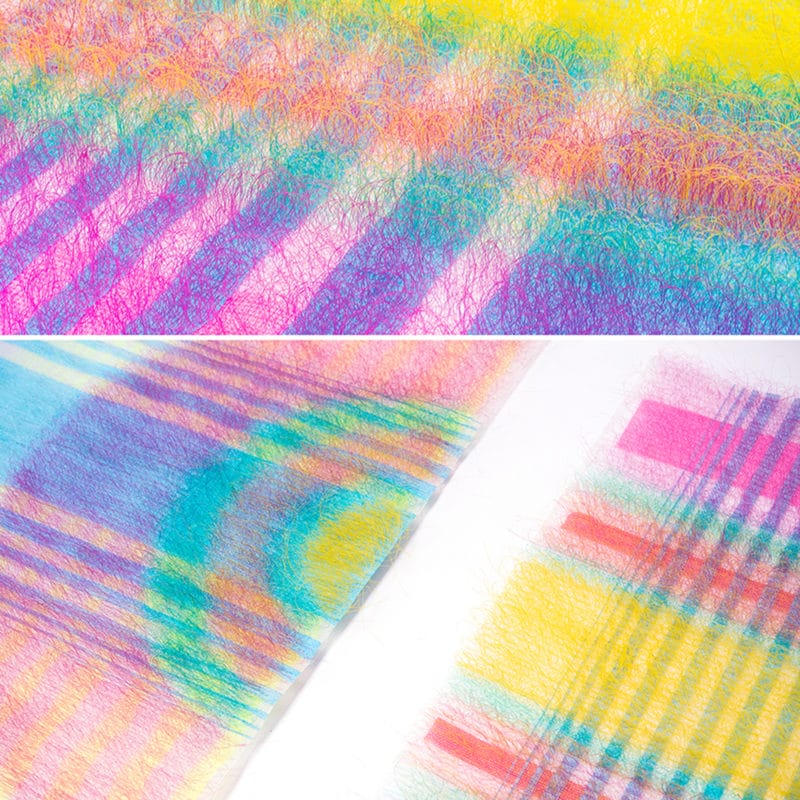Changing Perspectives: Agata Ciechomska’s works
Introduction translated by Jackie Kibble
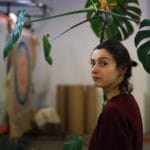
Agata Ciechomska is a young and talented artist originally from Lodz in Poland. Her textile surfaces, created using a manual processing technique called HandTufting, explore the phenomen created by the optical mixure that occurs when small areas of colours placed a long side one another but viewed at a distance or at different angles merge to form a new colour obtained uniquely by the eye of the observer.
The spectator’s movement animate the opera, modify it’s perception and creates unexpected chromatic and material effects so that, with the aid and combination of various yarns, the work becomes vibrant, mutable and iridescent.
Agata Ciechomska’s intent is to involve and include the spectator in her creations so that the research techniques, light and colours become a tool and the work of art ceases to be entirely produced by the artist but is only fulfilled with the active presence of the public.
Below is the link to the artist’s website:
Agata, can you tell us something about yourself and your history as an artist, how you started and why you chose textiles as your medium of expression?
I’m from Lodz, the city built ingolden times of textile industry and ruined by the fall of it, the subject of textiles was always omnipresent in social consciousness in one way or another.
To me textiles have been always important as products of everyday life therefore I chose to study textile design in Lodz University of Technology and I graduated there with a BA . As the name of the university implies, my studies were focused more on an industrial design of textile, but a few artistic subjects aroused my interest in textile art. University in Lodz gave me a lot of opportunities to travel and study abroad. That’s how I end up doing my MA in Sweden and it was there I realised I could express myself in textile art. Nevertheless I still feel like a beginner as an artist, there is still plenty to discover and to learn.
In the path you have taken to become a textile artist, was there an event or a person fundamental to your professional growth?
As I mentioned before, my MA in Swedish School of Textiles was a game changer for me. The beginnings there were tough, I wasn’t sure if I’m in the right place, but all the struggles were worth the result. Thanks to great teachers I discovered what is important to me as an artist and I found ways of expressing it.
In your works you explore the expressive potential of unusual materials, with a research that aims to enhance the color and especially the way in which the perception of color varies with the variation of light. Where does this interest come from? Can you talk about it?
Colour and light are the core of my research, but it is the material that can underline the effect or reduce it to minimum. To me observing colours and colour phenomenon is like experiencing the magic. I work quite close with colour theories and I am aware of the results of particular colour combinations, however it’s never stopped surprising me how easy our eyes and brain are tricked, how we see colours that are not really in the artpiece, or how strong they become by enhancing each other.
I quote a very interesting comment that I read in your biography: “For the art to become real, an active participation of the viewer is essential.”
What do you mean by “active participation” and how do you consider it a fundamental element for the understanding of your artworks?
It is the viewer’s eye that perceives all the transformations occurring in the art piece with a different angle and distance of seeing. The artworks seen from the front often seem less dense and intense in colour, whereas when viewed at an angle, look more homogeneous and colours get more vibrant, therefore the experience is fragile and it is only an instant that provokes this transition in front of the viewers eyes. Moreover, colour of threads blend with a distance creating a new colour that doesn’t really exist, it is produced directly in the retina of the viewers eye. So without the movement of the viewer there would be no magic of colour changes, therefore no magic in the artwork, all the three-dimensionality would be lost.
In your original and innovative works, is there still a reference or a link with the traditions of weaving?
I am weaving and hand-tufting (which is also considered a type of pile weave), so it is not only a reference or a link, but it is exactly what I am doing. But by using non-traditional materials I am able to challenge the preconception of weaving and hand-tufting and bring new qualities to one of the oldest crafts.
What are your sources of inspiration? Are there artists, artistic currents or trends in contemporary art that stimulate your imagination?
Material, colour and light itself are the most inspiring aspects for me. Since those attributes are not necessarily associated with textiles, I am looking for references also in fine arts and architecture. It is hard to list all of the great artists, but my top 5 would be: Olafur Eliasson, James Turrell, Carlos Cruz-Diez, Astrid Krogh and Faig Ahmed.Their body of work is entirely distinct from each other, but I had a pleasure to see exhibitions presenting their works and it was always a verypowerful experience.
What kind of research and design do you do when you start a new work?
It depends. Very often working on a new piece begins with a reflection on previous experiments and artworks I’ve done. I look for things that were successful and for those that could be developed further or done better. But sometimes I search for a new references in the state of the art that’s already out there or books and papers that could be relevant.
Can you describe ‘Polymorphic Pink’? How does it come about?
If you look up polymorphicin a dictionary, it means many-sided, changeable, assorted and that’s exactly what is this work about, pink that has many shades.
This piece highlights the spatiality of hand-tufting technique. There are pink vertical stripes in the woven backing, but there are also horizontal, semi-translucent pink pile loop stripes, therefore an interaction between all this different pink threads is possible. When the work is seen from the front, a check pattern is clearly visible and all the colours are mixing. But when looked at an angle, the vertical stripes disappear and instead only delicate mist of coloured horizontal stripes can be seen. So again it is the movement of the viewer that enables all the changes and gives meaning to the title.
Among your works is one in particular that represents you more and to which you are particularly connected?
I’m connected to each work but for different reasons. I don’t think I could choose only one.
What are you working on right now? Do you want to tell us about your current textile projects and your present or future exhibitions?
I am finishing a new piece right now and I already have plans for the next one, but all the ideas are in my sketchbook and need more development.
Until 15th of March you can see one of my works in Central Museum of Textiles in Lodz, as a part of 16th International Textile Triennial.
With another two textile artists and friends of mine, Maike Jansen and Lola van Praag, we are planning a textile project and an exhibition, it is still in the process, but we hope it will happen this year.
Besides I am applying for some open calls. Let see what the future will bring.
